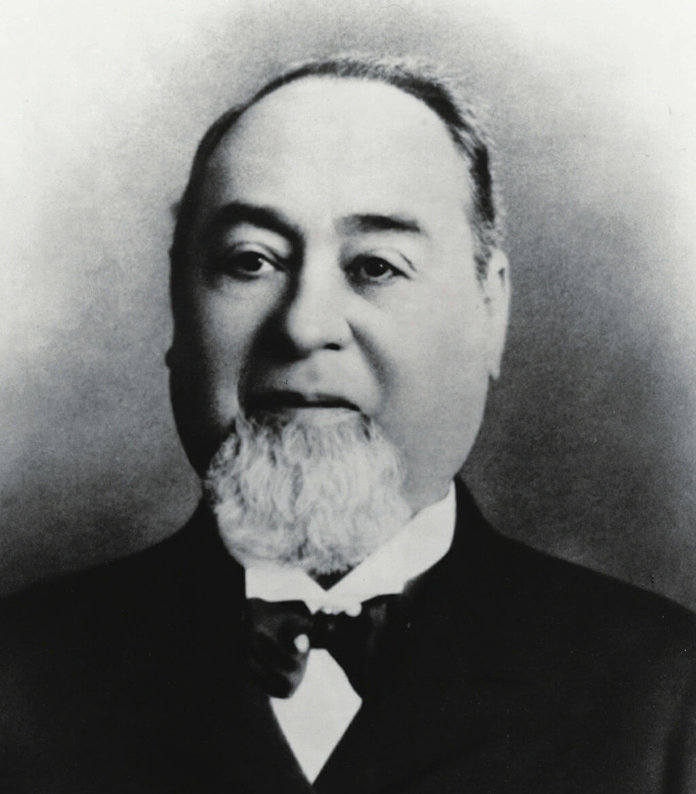
In many ways, Levi Strauss is the perfect encapsulation of the American immigrant success story. From a humble start abroad, Strauss and the Levi’s name have not just become a successful business and brand, but a genuine part of American culture. The creation of blue jeans has become one of the most popular and enduring articles of clothing in the world and serves as something uniquely American.
While Levi Strauss may be the first name that people think of when it comes to the business, this is a bit of an oversimplification. Strauss’s descendants, the Haas family, have helped guide Levi’s as a business to its current success. In fact, if not for the family’s business acumen, there may not still be a Levi’s today. To understand the different roles the family has played, we need to start at the beginning.
The Invention of the Blue Jeans
Born in Buttenheim, Bavaria on February 26, 1829, to Hirsch Strauss and his second wife Rebecca Haas Strauss, Levi Strauss would move to America relatively early in life. Two years after the passing of his father from tuberculosis, Levi moved to New York alongside three of his sisters and began working his two older brothers, Jonas and Louis. At the time, Jonas and Louis were already established in America, running a wholesale dry goods company called “J. Strauss Brothers & Co.” By 1850, Levi would be well known in the business, but his destiny would lie elsewhere.
When the news of the California gold rush hit New York, Strauss was quick to head west, but not to try his luck prospecting for gold. Instead, he created his own wholesale dry goods business in San Francisco, while serving as the West Coast representative for his family’s dry goods business. Under his leadership, the company sold underwear, clothing, umbrellas, and bolts of fabric to stores across newly formed towns that were sprouting across the western frontier.
In 1872, Levi received a letter from Jacob Davis, a tailor based in Reno, Nevada. A regular customer of Strauss, Davis explained how he had devised a unique way of making pants for his customers, using metal rivets at the points of strain. He wanted to patent this method, but needed a business partner to make it viable. Strauss quickly invited Davis out to join him in California, and within the year, the two invented the blue jean by combining Davis’s method with durable fabrics. Originally called “overalls” or “waist overalls”, the blue jeans became an instant hit among the Gold Rush miners, who became enamored with the sturdy pants that held up well during their work.
From Function To Fashion
Following years of success, Levi Strauss passed away on September 26th, 1902, with no children to pass on the business. Instead, the bulk of his $6 million estate and the reins of the company went to his four nephews, the Sterns. But within ten years, the company found itself in dire financial straits under their weak leadership. At one point, the nephews considered liquidating the company, but a man named Walter A. Haas was able to convince them otherwise. A relatively new addition to the family, Haas was a son-in-law of Jacob Stern, one of the four nephews. Haas was not only able to convince the family to retain the company, but was also able to reverse the fortunes of the struggling company just two years after joining it. By 1928, Haas was named president of Levi Strauss & Co.
But Haas’s greatest move was yet to come. Following the end of World War II, he decided to take the company in a new direction, leaving its roots in the wholesale dry goods business and focusing on manufacturing. This was a huge gamble for a company that was making 75% of its profits in wholesale, but the post-war era manufacturing boom that followed ultimately proved Haas right. Alongside the manufacturing growth came the diversification of the product line, as Haas worked to grow the company’s distribution channels, and crucially, began to focus on producing clothing that were appealing to young people.
These shrewd maneuvers came as pop-culture interest in jeans began to explode. A-list actors such as Marlon Brando and James Dean were seen wearing Levi’s jeans in Hollywood hits like “The Wild One”, shifting public perception of jeans from functional work clothes to everyday wear that was fashionable in its own right. With the force of Hollywood and American cultural influence around the globe, Levi’s quickly become an icon of the American life, and the company’s financial struggles would be a thing of the past.
The Stauss & Haas Legacy
Currently, Levi Strauss & Co. is one of the largest brand names in apparel with over 50,000 locations across 110 countries. The company is still privately held by descendants of Strauss’s original nephews, and three members of the Haas family sits on the board of directors. As of 2015, the family ranked #78 on Forbes’s list of the World’s Richest Families.
The Strauss and Haas names are associated with a number of philanthropic causes, and still maintain their hand in shaping American culture, with Walter A. Haas famously buying Oakland Athletics baseball team just to keep it in the community despite his lack of interest in baseball. However, the family’s greatest legacy may be how their story serves as a true example of the American Dream – the story of a humble immigrant who turned innovation and hard work into what may be the most popular piece of apparel on Earth.









